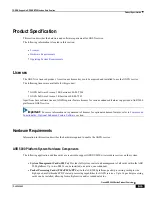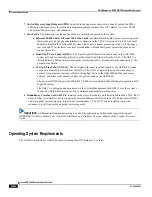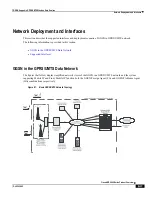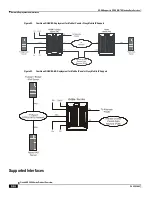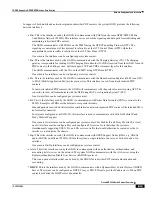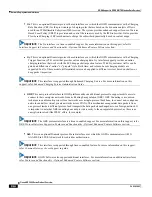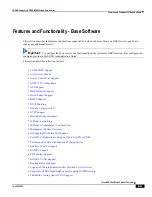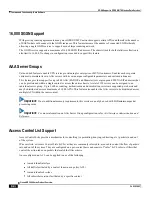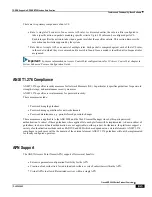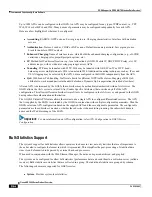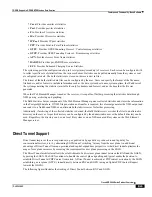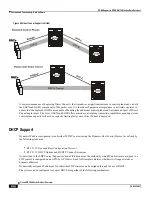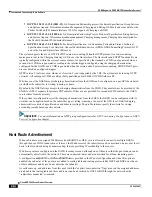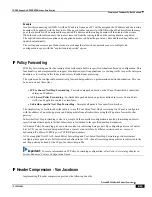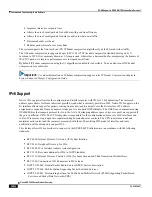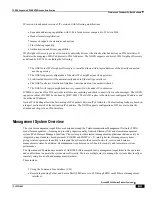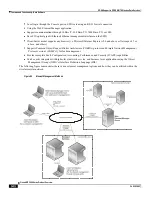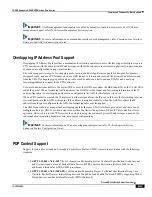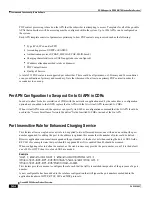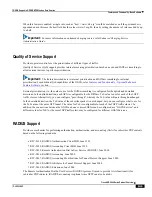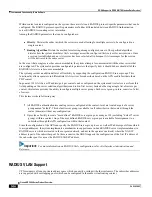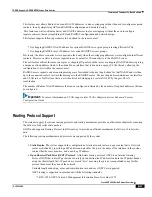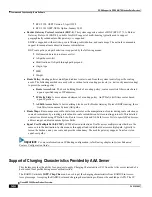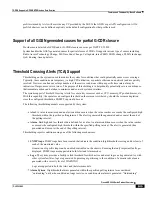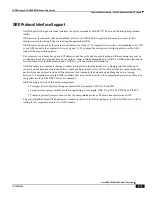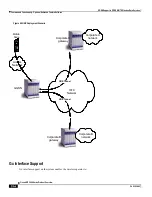
GGSN Support in GPRS/UMTS Wireless Data Services
Features and Functionality - Base Software ▀
Cisco ASR 5000 Series Product Overview ▄
OL-22938-02
Example
A subscriber connecting to GGSN A with an IP address from a pool P1 will be assigned the IP address and the routing
domain will be updated with the host route. When a subscriber connects to GGSN B with an IP address from the same
pool, the subscriber will be assigned the requested IP address and the routing domain will then learn its host route.
When the subscriber disconnects, the route is removed from the routing table and the routing domain is updated.
The explicit-route-advertise option can be applied and removed from the pool at any time and the routing tables are
updated automatically.
The overlap and resource pool behavior does not change therefore it does not make sense to configure an
overlap/resource pool with the ―explicit-route-advertise‖ option.
IP Policy Forwarding
IP Policy Forwarding enables the routing of subscriber data traffic to specific destinations based on configuration. This
functionality can be implemented in support of enterprise-specific applications (i.e. routing traffic to specific enterprise
domains) or for routing traffic to back-end servers for additional processing.
The system can be configured to automatically forward data packets to a predetermined network destination. This can
be done in one of three ways:
IP Pool-based Next Hop Forwarding
- Forwards data packets based on the IP pool from which a subscriber
obtains an IP address.
ACL-based Policy Forwarding
- Forwards data packets based on policies defined in Access Control Lists
(ACLs) and applied to contexts or interfaces.
Subscriber specific Next Hop Forwarding
- Forwards all packets for a specific subscriber.
The simplest way to forward subscriber data is to use IP Pool-based Next Hop Forwarding. An IP pool is configured
with the address of a next hop gateway and data packets from all subscribers using the IP pool are forward to that
gateway.
Subscriber Next Hop forwarding is also very simple. In the subscriber configuration a nexthop forwarding address is
specified and all data packets for that subscriber are forwarded to the specified nexthop destination.
ACL-based Policy Forwarding gives you more control on redirecting data packets. By configuring an Access Control
List (ACL) you can forward data packets from a context or an interface by different criteria, such as; source or
destination IP address, ICMP type, or TCP/UDP port numbers.
ACLs are applied first. If ACL-based Policy Forwarding and Pool-based Next Hop Forwarding or Subscriber are
configured, data packets are first redirected as defined in the ACL, then all remaining data packets are redirected to the
next hop gateway defined by the IP pool or subscriber profile.
Important:
For more information on IP Policy Forwarding configuration, refer
Policy Forwarding
chapter in
System Enhanced Feature Configuration Guide
.
IP Header Compression - Van Jacobson
Implementing IP header compression provides the following benefits:
Summary of Contents for ASR 5000 Series
Page 1: ......
Page 26: ......
Page 48: ...New In Release 10 0 SCM Features Cisco ASR 5000 Series Product Overview OL 22938 02 ...
Page 50: ......
Page 58: ......
Page 68: ......
Page 126: ......
Page 138: ......
Page 146: ......
Page 218: ......
Page 236: ......
Page 356: ......
Page 374: ......
Page 422: ......
Page 496: ......
Page 572: ......
Page 654: ......
Page 700: ......
Page 726: ......
Page 784: ......
Page 816: ......
Page 844: ......
Page 906: ......
Page 926: ......
Page 942: ......
Page 943: ...Cisco ASR 5000 Series Product Overview OL 22938 02 Chapter 30 Technical Specifications ...
Page 966: ......
Page 972: ......

